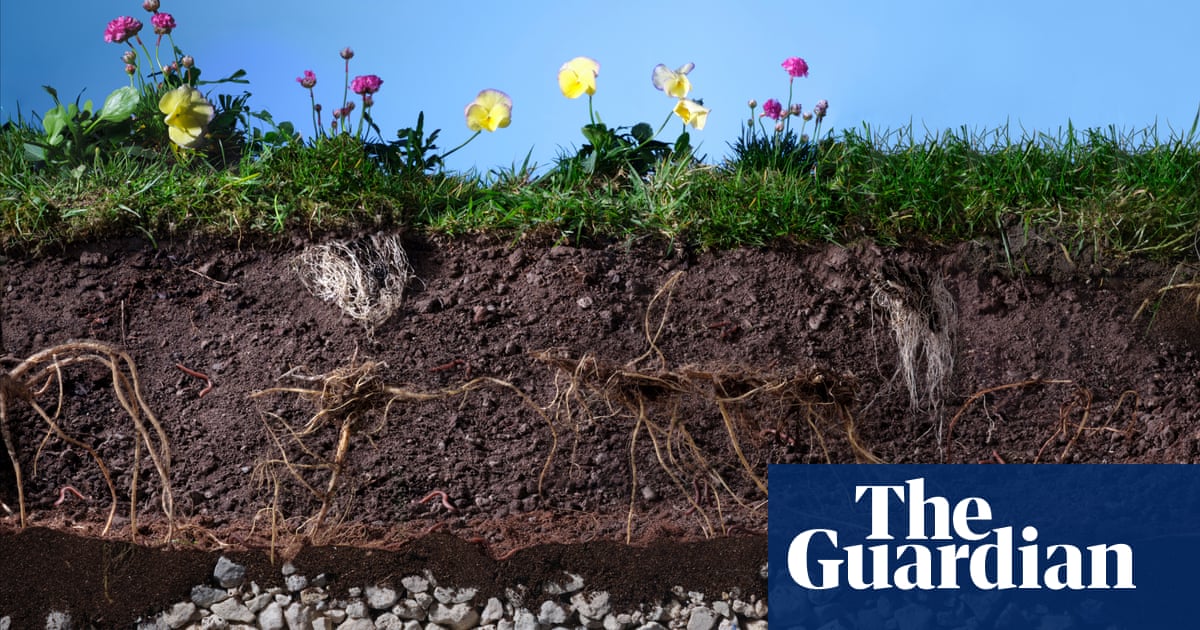Stryder50
Platinum Member
The secret world beneath our feet is mind-blowing – and the key to our planet’s future
Don’t dismiss soil: its unknowable wonders could ensure the survival of our speciesEXCERPTS:
...
Beneath our feet is an ecosystem so astonishing that it tests the limits of our imagination. It’s as diverse as a rainforest or a coral reef. We depend on it for 99% of our food, yet we scarcely know it. Soil.
Under one square metre of undisturbed ground in the Earth’s mid-latitudes (which include the UK) there might live several hundred thousand small animals. Roughly 90% of the species to which they belong have yet to be named. One gram of this soil – less than a teaspoonful – contains around a kilometre of fungal filaments.
When I first examined a lump of soil with a powerful lens, I could scarcely believe what I was seeing. As soon as I found the focal length, it burst into life. I immediately saw springtails – tiny animals similar to insects – in dozens of shapes and sizes. Round, crabby mites were everywhere: in some soils there are half a million in every square metre.
Then I began to see creatures I had never encountered before. What I took to be a tiny white centipede turned out, when I looked it up, to be a different life form altogether, called a symphylid. I spotted something that might have stepped out of a Japanese anime: long and low, with two fine antennae at the front and two at the back, poised and sprung like a virile dragon or a flying horse. It was a bristletail, or dipluran.
As I worked my way through the lump, again and again I found animals whose existence, despite my degree in zoology and a lifetime immersed in natural history, had been unknown to me. After two hours examining a kilogram of soil, I realised I had seen more of the major branches of the animal kingdom than I would on a week’s safari in the Serengeti.
But even more arresting than soil’s diversity and abundance is the question of what it actually is. Most people see it as a dull mass of ground-up rock and dead plants. But it turns out to be a biological structure, built by living creatures to secure their survival, like a wasps’ nest or a beaver dam. Microbes make cements out of carbon, with which they stick mineral particles together, creating pores and passages through which water, oxygen and nutrients pass. The tiny clumps they build become the blocks the animals in the soil use to construct bigger labyrinths.
Soil is fractally scaled, which means its structure is consistent, regardless of magnification. Bacteria, fungi, plants and soil animals, working unconsciously together, build an immeasurably intricate, endlessly ramifying architecture that, like Dust in a Philip Pullman novel, organises itself spontaneously into coherent worlds. This biological structure helps to explain soil’s resistance to droughts and floods: if it were just a heap of matter, it would be swept away.
It also reveals why soil can break down so quickly when it’s farmed. Under certain conditions, when farmers apply nitrogen fertiliser, the microbes respond by burning through the carbon: in other words, the cement that holds their catacombs together. The pores cave in. The passages collapse. The soil becomes sodden, airless and compacted.
...

The secret world beneath our feet is mind-blowing – and the key to our planet’s future
Don’t dismiss soil: its unknowable wonders could ensure the survival of our species




